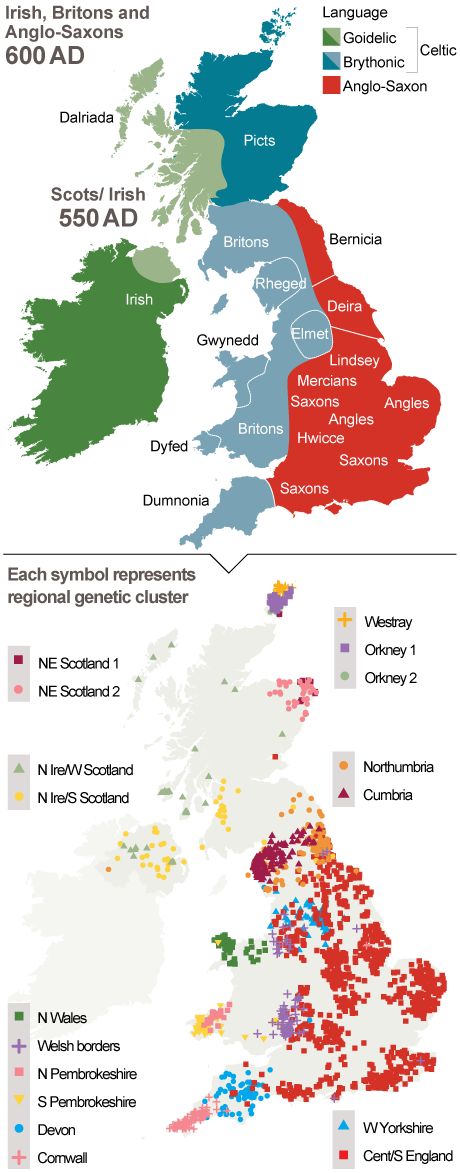
Then, in 1066, the Normans came and gradually ended Anglo-Saxon independence. It’s been almost a millennium since William the Bastard landed on the beach near Hastings. But according to genetic researchers at Oxford University, many of the British peoples remained in place. They took DNA samples of 2,039 people whose grandparents were born within 80 kilometers of each other. When compared, the researchers found that genetic clusters form around the same general areas of the old Anglo-Saxon and Celtic kingdoms. Sarah Knapton writes for the Daily Telegraph:
The most striking genetic split can be seen between people living in Cornwall and Devon, where the division lies exactly along the county border. It means that people living on either side of the River Tamar, which separates the two counties, have different DNA.
Similarly there is a large area in southern and central England with a shared genetic heritage which coincides with the boundaries of Anglo-Saxon England. Likewise, separate genetic groups can be found in areas of North and South Wales corresponding to the ancient kingdoms of Gwynedd and Dyfed.
In the North, specific groups were found in the North East, tallying with the area of Bernicia which was colonised by the Angles from Southern Denmark. And, intriguingly, a small genetic cluster was spotted in the West Riding of Yorkshire, which coincides with the former small kingdom of Elmet, one of the last strongholds of the ancient Britons.
Geneticist Professor Sir Walter Bodmer of Oxford University said: “What it shows is the extraordinary stability of the British population. Britain hasn’t changed much since 600AD.
“When we plotted the genetics on a map we got this fantastic parallel between areas and genetic similarity.

No comments:
Post a Comment